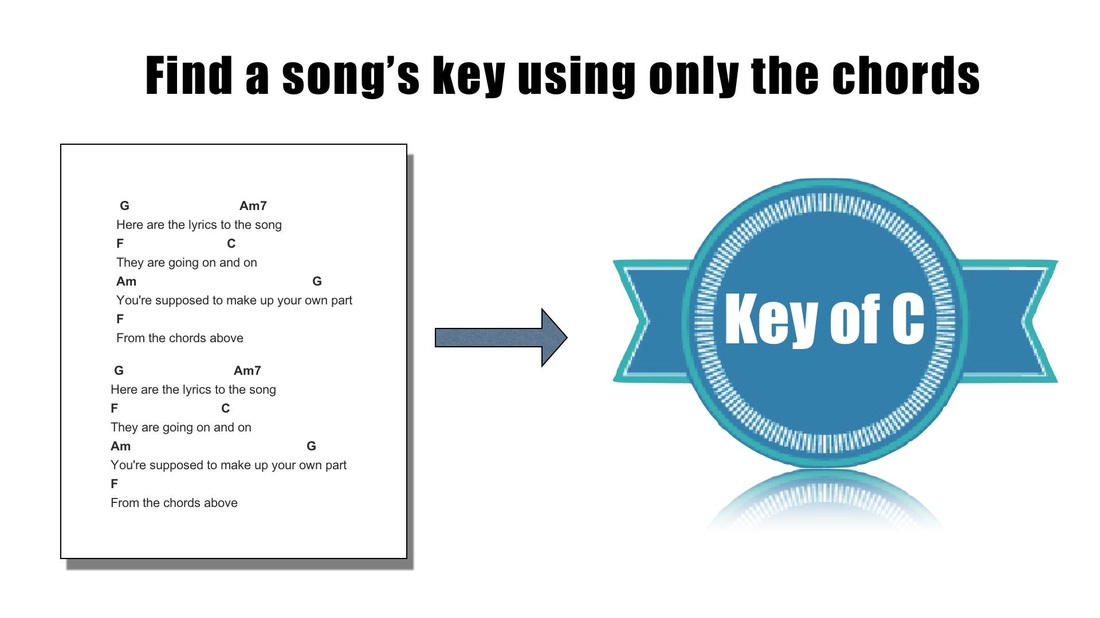For example:
G Am7
Here are the lyrics to the song
F C
They are going on and on
Am G
You're supposed to make up your own part
F
From the chords above
This is called a "Chord Sheet". It's one form of a music "Chart". It has the chords, but every member of the band has to create their own parts to play.
This presents MANY problems when you're not used to it. Just one of the problems is that it provides NO KEY SIGNATURE. Knowing the key is helpful to embellishing the chords and creating beautiful sounding parts. And you can do it yourself.
Here's a simple check to find the key of any song using only the CHORDS. **Note: This particular trick will work for MAJOR KEYS ONLY. But that is most songs, so it's a very useful trick to know.
Step 1:
Find all the MAJOR CHORDS used in the song. Sometimes they may HIDE as other names. Here are some examples:
- Major Chords: C, F, G
- "Hiding as other chords": Cadd2, F2, Gsus
Ignore chords like: Dm, Eminor, Adim7, Dm7, Em7(4) and others that have m, dim, º, or minor in them.
Write the MAJOR chord symbols you find next to each other on a piece of paper. The ORDER DOESN'T MATTER for this. You should have THREE of them. If you have more than 3, go to step 4.
Step 3:
Here's where the magic happens. Find the letters that are NEXT TO EACH OTHER in the MUSICAL ALPHABET.
By this I mean "A" & "B" are "next to each other". "B & C" are "next to each other".
*Remember that in the MUSICAL ALPHABET "G" returns to "A", so for the purpose of this "G" & "A" are "next to each other". (ignore flats (b) or sharps (#) in the symbols for this, just the LETTERS).
Once you found the two that are "next to each other", look at the OTHER symbol that is leftover (including any flats or sharps). THAT IS THE KEY OF THE SONG!
For example:
- F, G, Am, C
-Our 3 chords are F, G, C
-F and G are "next to each other"
-C is the KEY! C Major!
- A2, C#m, E, B
-We look at the A2 like it's "A"
-Our 3 chords are A, E, B
-A and B are "next to each other"
-The Key? E Major!
Step 4:
If you have more than 3 major chords, IGNORE the chord(s) that occur the LEAST in the song. Use the 3 that occur the MOST.
A simple trick, but a useful trick. Here's some more examples for you to try, and post your answers!:
1. Bm, A, D, G, Em
What's the key?
2. D, A, F#m, Esus
What's the key?
3. F, C, Bb, Gm, Dm
What's the Key?
Extra Credit for this one!
4. C#sus, B2, F#, A#m
What's the key?


 RSS Feed
RSS Feed

